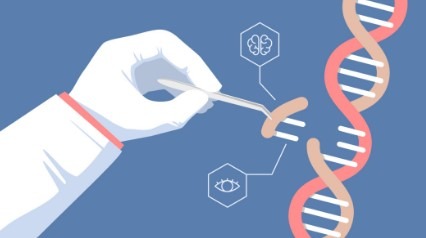Genome editing includes transformative influences throughout the world of biological sciences. The discovery of CRISPR and the related proteins CRISPR (CaS) has extended its uses in genetic research in different laboratories. Traditional therapy of the genes has raised some issues that can cause toxicity for both insertional and immunogenic oncogenesis. CRISPR technology supplies efficient and simple alternatives for specific concerns of gene editing.
Shifting the Paradigm of Gene Therapy
Gene Therapy was used in clinical trials with viruses that were reengineered with safety in mind. Modern approaches to clinical trials are scrutinized for the adverse reactions of immunogenic methods. The repurposing and the discovery of gene editing that is programmable have made effective development possible. Technology is often included with the Adeno Associated Virus (AAV) that sometimes could not averse the risk of the viruses. For modern genome editing, CRISPR is a widely used and developed tool.
CRISPR/Cas9 Technology and Its Pioneering Discoveries
CRISPR technology was first explained by Francisco Mojica and was later considered the key element in the immune system in prokaryotes. The potential use of CRISPR technology has been modified by introducing a synthetic tracrRNA and crRNA with the RNA (sgRNA) of the single guide. All these discoveries were followed by genome editing in mammalian cells with the possibility of implementing gene therapy in CRISPR.
Mediated Genome Editing and Mechanistic Overview of CRISPR/CAS9
CRISPR is a component system that is targeted for effective gene editing. Among the components, CAS9 protein is the single effector which contains the domains of HNH and RuVC. Double-stranded breaks within the domains may target the DNA. Another component of gene editing can be considered as the single-guide RNA which carries the sequence by enabling the anchoring to the spacer of the base pair.
Biological Advancements of CRISPR/CAS9 in Clinical Trials
- Immunotherapy Of Cancer- Phase 1 immunotherapy of Cancer was opened in the year 2018 by using CRISPR technology. The clinical trial was approved by the FDA (Food and Drug Administration) in the United States with careful consideration. After that many trials were introduced by using the same strategies in various clinical and pre-clinical stages.
- CRISPR Technology during the Pandemic of Covid-19- During the recent pandemic of Covid-19, CRISPR technology provided effective aid. During pressing times, the use of efficient tools for testing is used for the emergency treatment of respiratory disease during the Covid-19 outbreak. Though the current methods are time-consuming, they can be trusted for accuracy and sensitivity.
- CRISPR Gene Therapy- The gene therapy of CRISPR is carried on with other subsequent therapies with the modified stem cells. With the help of the recent therapy called EDIT-101, CRISPR can be directly introduced into the retina of LCA patients very effectively.
Limitations of CAS9/ CRISPR
- Damage Toxicity Of DNA
- Effects Of Off-Target DNA
- Motif Requirement And Adjacent Protospacer
Conclusion
Though there are a few limitations, CRISPR technology has proved its success in biological science. Gene therapy was introduced for repurposing the viruses in patients with genetic diseases. CRISPR technology helps in editing human genes which are approved by the FDA for the clinical trials of diseases like cancer and other non-immune diseases.




